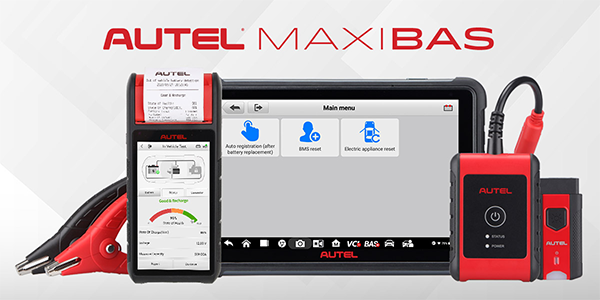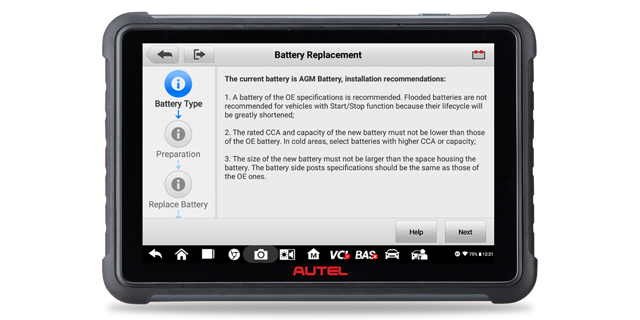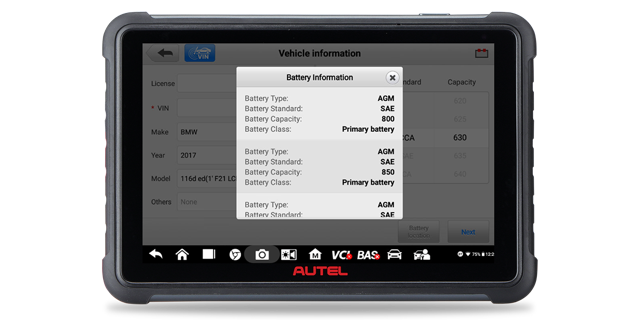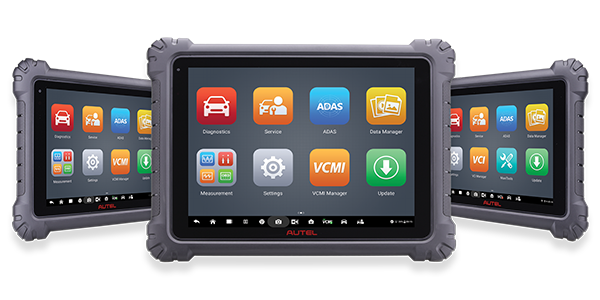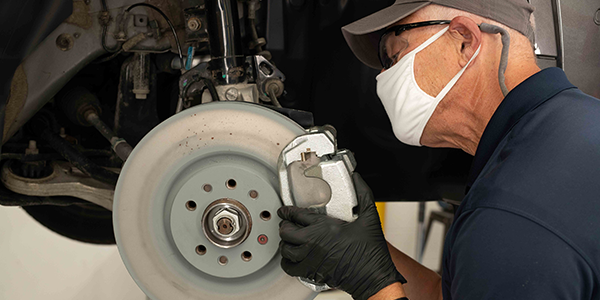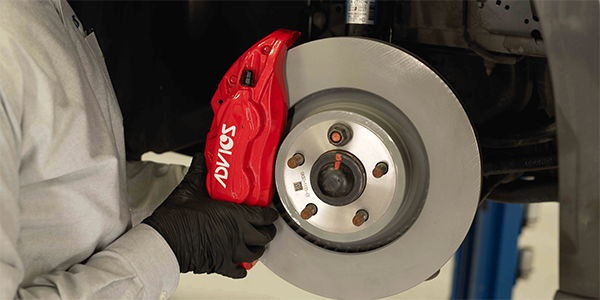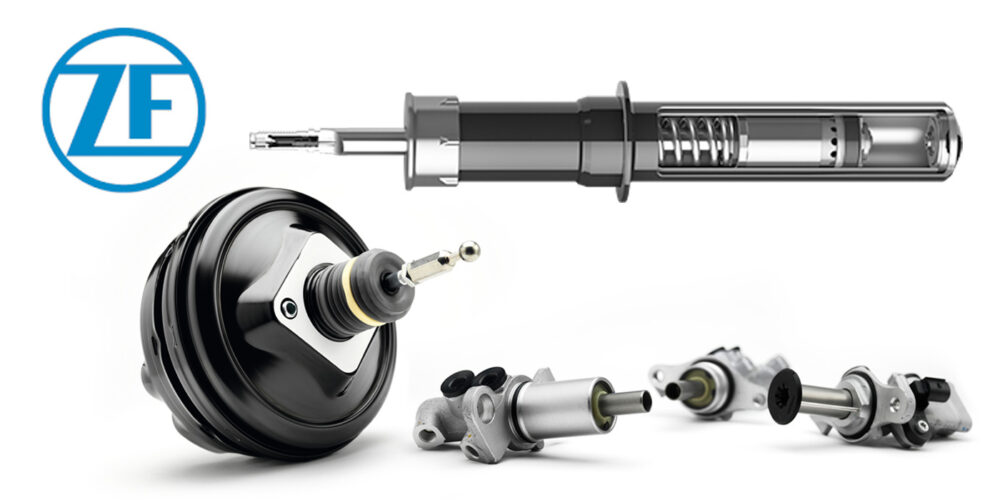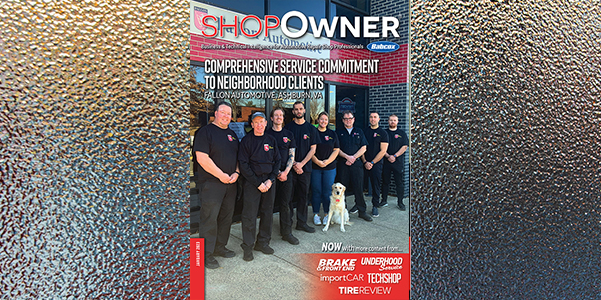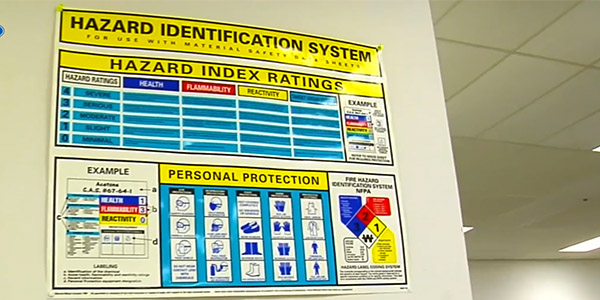The automotive industry is abuzz with news about battery advances. That is when it comes to those batteries used in electric vehicles. With traction batteries boasting 800 and even 900 volts, those advances are impressive, but also remarkable is how the 12-volt battery has evolved to support the power-draining safety and convenience features and fuel- efficiency technologies on today’s vehicles.
Battery and charging systems of today’s vehicles present a service challenge and an opportunity for shops: A challenge because replacing a battery has become increasingly more complicated without the right scan tool. But also, an opportunity because these additional services, depending on the vehicle, can add $75 to $350 to a battery replacement invoice.
But first, let’s examine the changes in vehicle technologies that were the catalysts in developing more powerful batteries and the need to design a Battery Management System (BMS).
The first battery in vehicles coincided with the first electric starter in 1912. It was just 6 volts, and its primary purpose at the time was to store the electrical energy the starter would use to crank the engine mechanically and to power the headlight (before the electric light, an oil lamp was used and “started” with a match).
In the 1950s, the lead-acid 12-volt battery became standard as vehicles became heavier (on average 4,000 pounds), engines became larger and more powerful, and energy- consuming technologies such as air conditioning and power windows became popular,
There were no significant advances in the automotive battery until 1971 when General Motors’ Delco-Remy division debuted the “Freedom” battery, which was so named because it required no maintenance. The Freedom battery was said to be a milestone in battery development, as the lead-calcium grid alloy replaced alimony in the plates’ construction, making it more powerful.
The alimony battery could lose cranking ability in as little as four months of nonuse, as compared to the new battery that could still perform after 14 months. The Freedom battery freed the driver from needing to top off the battery with distilled water.
In the early 2000s, as automakers started introducing even more power-needing vehicle systems—some of which operate when the engine is off—they sought a more powerful battery with the ability to function under substantial loads. Waiting in the wings was th e Absorbant Glass Mat (AGM) battery.
AGM batteries use a thin fiberglass mat soaked in sulfuric acid and packed between the conducting plates. The improved power is due to increased acid coverage of the plates, but also the ability to add more conducting plates.
European vehicle manufacturers were the first to adopt the AGM battery, and today, about half use AGM batteries, while the others use Enhanced Flooded Batteries (EFB). EFBs, developed in 2008, use a poly fleece material around the lead plates that are said to protect the plates, extend their life, and provide a more consistent flow of energy. EFB batteries are estimated to execute 55,000 more engine starts than traditional flooded batteries.
Today, the battle for market dominance between AGM and EFB batteries is a good one, with cost and performance benefits discussed on both sides. One thing seems certain: automakers are increasingly adding Start/Stop systems to their vehicles, which need powerful batteries. A typical Stop/Start system alerts the ECU to shut off the engine when the brake is depressed, and the vehicle is stopped. The ECU is prompted to start the engine when the brake is released.
First appearing in 2008 Volkswagen models, Start and Stop has since been adopted by many automakers to meet fuel economy standards. According to Sustainable America, a non-profit promoting fuel efficiency through public education, in 2019, 70% of new GM vehicles had start/stop installed, and in 2020, 57% of all new vehicles sold in the U.S. had the system.
The use of Start and Stop, and the increasing adoption of safety and parking features, convenience and entertainment technologies, including remote start, touchscreen monitors, satellite radio, USB-device powering, heated seats, and hands-free liftgate, required automakers to employ more powerful batteries but to develop a system to manage their draw, the BMS. The BMS monitors and manages the battery’s State of Health (SoH). and the State of Charge (SoC) to ensure its ability to start the vehicle and power its systems. An example of this management is the system’s ability to “shut down” Start and Stop and Remote Start capabilities if it detects low SoC or SoH. European vehicles, including BMW/Mini, Volkswagen/Audi, and Mercedes, have been BMS-equipped for years. But this system is becoming standard on all vehicles.
For this reason, many vehicles require a scan tool when replacing a battery. When a new battery is introduced to the BMS, several functions may need to be completed, including clearing the “adaptive memory” and resetting the system’s “charging strategy.” Also, once a battery is replaced, many electrical components, including power windows, sunroof, and radio need coding.
As all automakers approach battery management differently, troubleshooting and installing batteries can seem overwhelming.
Autel’s battery tools have taken the confusion and guesswork out of battery service and provided a step-by-step on-tool analysis and installation guide. MaxiSYS tablet users can perform BMS services via the service menu. Still, an extensive list of in-vehicle and out-of- vehicle battery, starter, and alternator testing capabilities are available with the purchase of the Bluetooth-enabled MaxiBAS BT506 unit. Autel’s battery testers employ Adaptive Conductance technology to achieve advanced SoC and SoH testing accuracy on Flooded, AGM, AGM Spiral, EFB and GEL batteries. This testing method allows technicians to achieve accurate SoH results even when the battery charge is low.
Shops looking for a dedicated battery tablet will not find one as comprehensive as the MaxiBAS BT609, a lightweight, 7-inch wireless touchscreen tablet with all systems diagnostics. The BT609 offers industry-leading battery registration and component reset coverage, including performing these functions on Stellantis vehicles (Chrysler, Dodge, Jeep, Ram, and Alfa Romeo) with AutoAuth use.
Battery advancements have helped modern vehicles become the amazing machines they are today, but it will likely remain overlooked. So, the next time a customer drives in saying he “just” needs a new battery, it’s ok to smile back before grabbing your Autel and getting to work.

